Reasons to visit Tarascon
Today I want to tell you about our trip to another medieval city in Provence - Tarascon. “In France, everyone is a little bit Tarasconian.” I think many reading people remember the very epigraph with which the French writer Alphonse Daudet provided his first novel in a trilogy about the adventures of the inventor and tireless braggart Tartarin.
However, completely different reasons, far from literature, brought me to this pleasant town of Provence.

The first reason was... the legend. More precisely, two monuments inextricably linked with it.
What do you think this animal is with fangs, claws, a shell like a turtle and with eyes like the warriors of the Golden Horde? Meet Tarasque. That was the name of a dragon-like creature that lived in ancient times in the thickets on the banks of the Rhone River, on the territory of this city.
This mysterious creature left his mark in the history of the city because of his eating habits. Tarasque ate mostly people (at the same time, one portion of "food" consisted of 8 people), and his favorite food was virgins. It is clear that these peculiar gastronomic preferences, the causes of which can only be guessed at, were a big problem for the local population.

Saint Martha, who came to these regions on a ship, helped to tame the gourmand who was annoying everyone. Hearing the complaints of the local residents about the behavior of the voracious monster, Marta agreed to come to their aid. According to one version, she simply showed the animal a wooden cross, and according to another - she sang a song to him. Tarasque, impressed either by the power of Christian faith or by high art, lay down at Martha's feet, like a dog, and dozed off. And Martha, having tied a ribbon around the neck of this music lover, led him, as if on a leash, to the town. But the inhabitants, who did not believe in the re-education of the dragon-esthete, took and killed the poor man.

The second (and, in fact, more important than the first) reason for our visit to Tarascon was the desire to see the local castle, which went down in history as the castle of the Provençal king René. The castle, as well as the church, is located within walking distance of Tarasque.


The medieval and renaissance giant Tarascon interested me even when there was no still mention of a trip to Provence. Therefore, I knew in advance about all the cataclysms, which, to put it mildly, did not affect the interior of the castle in the best way. But I couldn't help but come and pay my respects to this greatness, to this amazing mixture of beauty and brutality, despite the overwhelming emptiness of most of the castle's premises.

The Church of St. Martha
To Taraskone my husband and I arrived at five o'clock in the evening, from the city of Arles, after completing a large excursion program, which included the lavender fields of Senank Abbey, the picturesque village of Le Beau-de-Provence, and much more . The distance from Arlia to Tarascon is about 20 km, i.e. е. go if there is no force majeure on the road - 25-30 minutes.
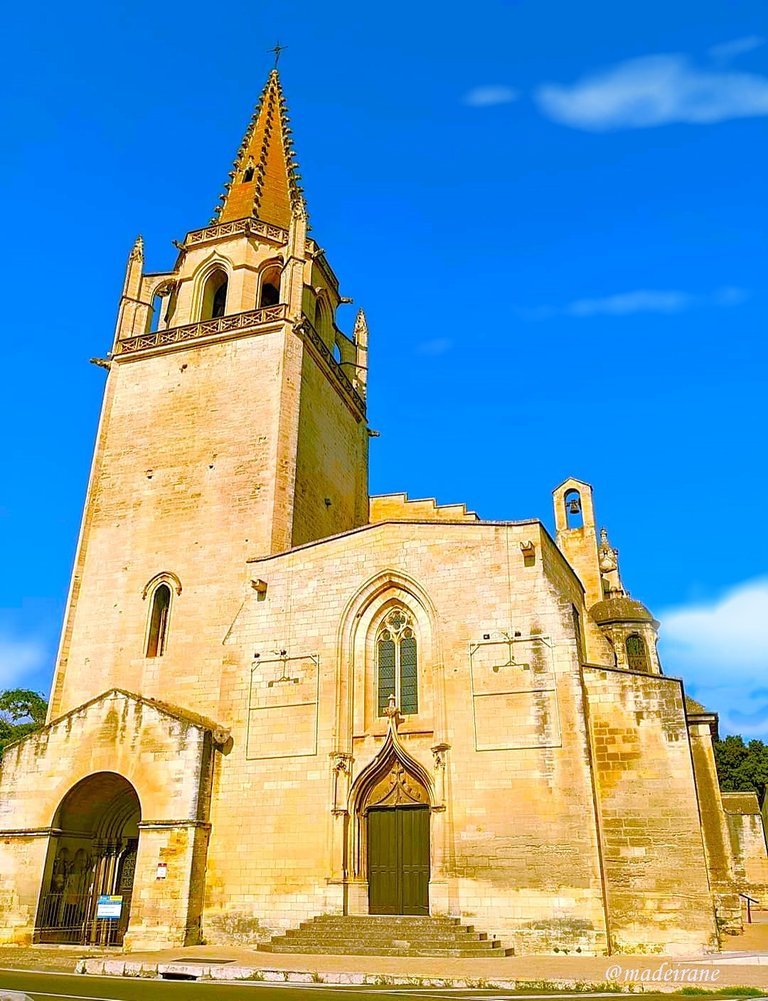

After welcoming Tarasque, we wanted to look at the interior of the church, consecrated in honor of his tamer - Saint Martha.
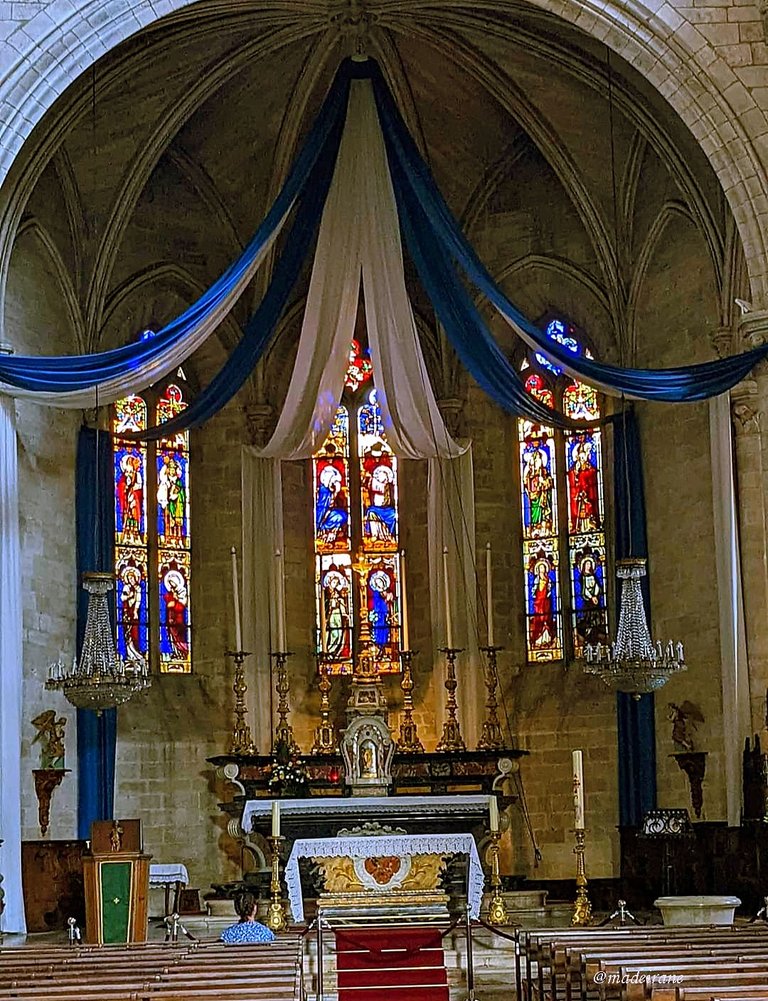
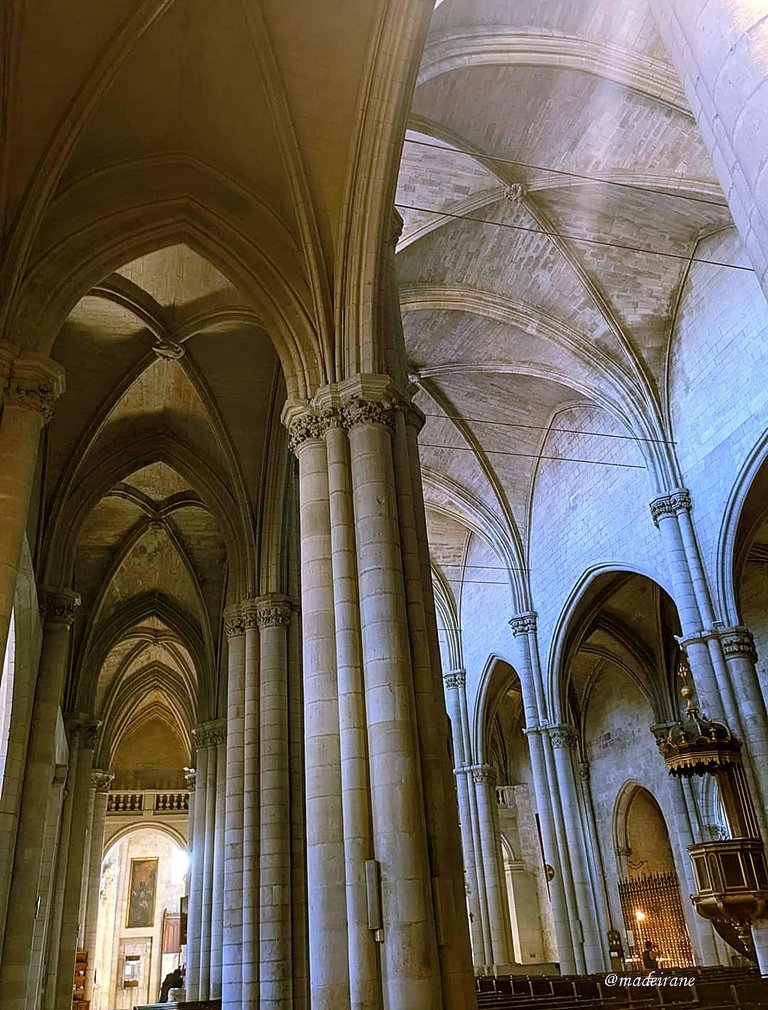
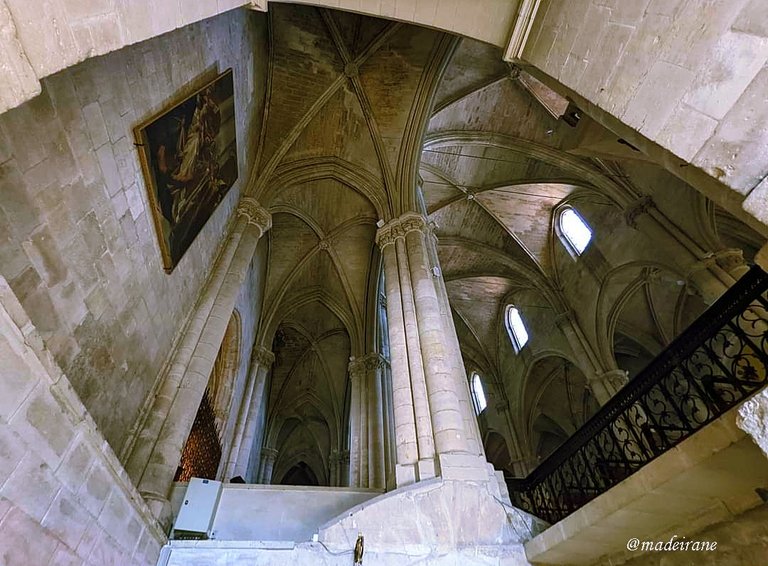
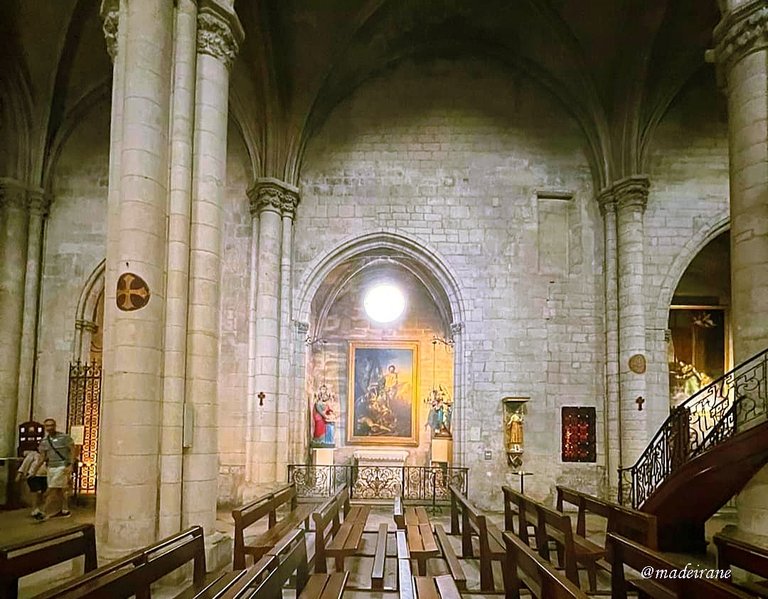
The church, whose architecture is dominated by the Romanesque style, is located nearby - exactly opposite the Tarasque. They were built in the XI and XVII centuries. In fact, this is another monument related to this legend. The reason is that after the story with the victory over the gourmet-esthete, Saint Martha was declared the heavenly patroness of Tarascon.
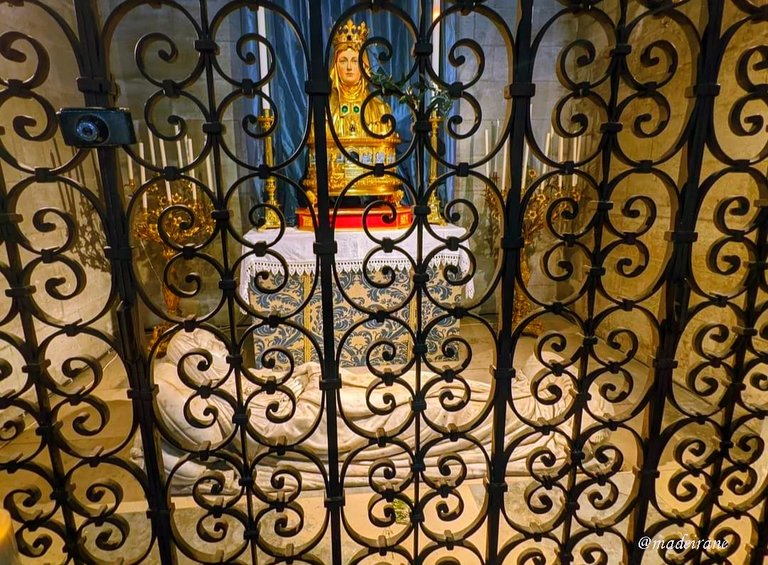
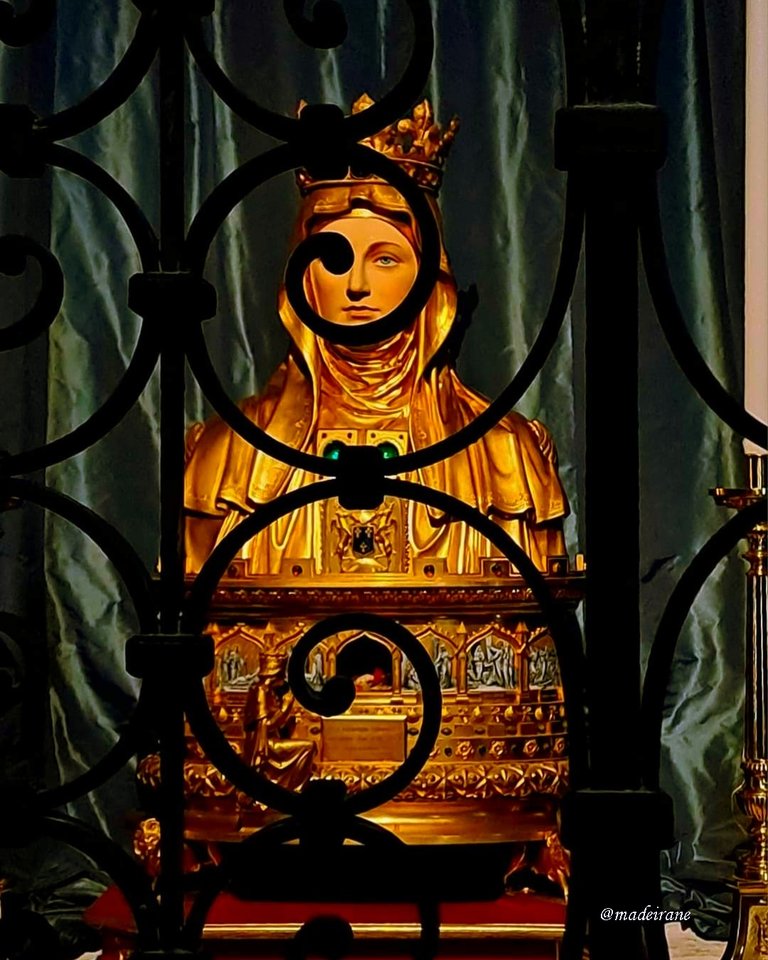
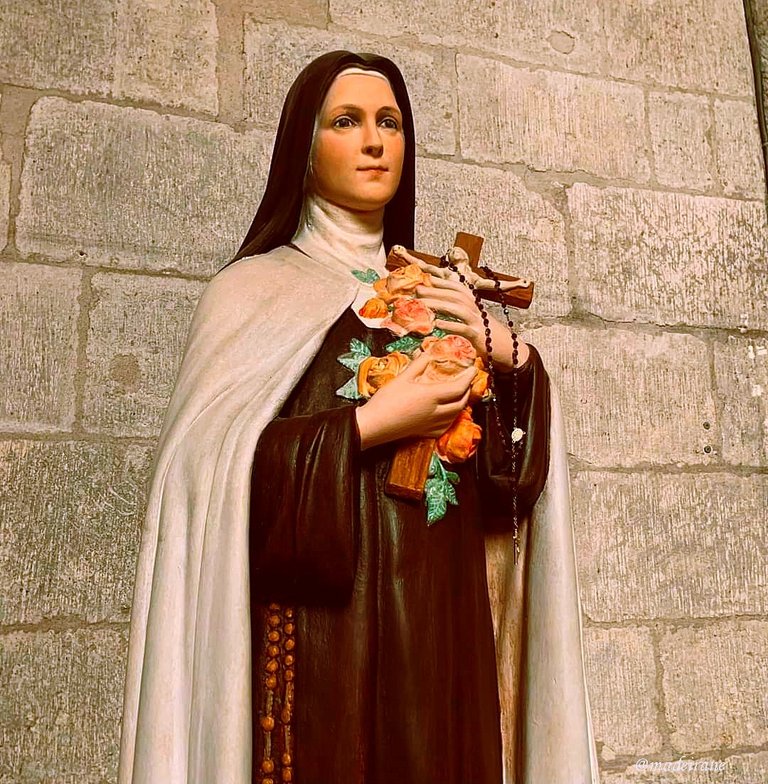
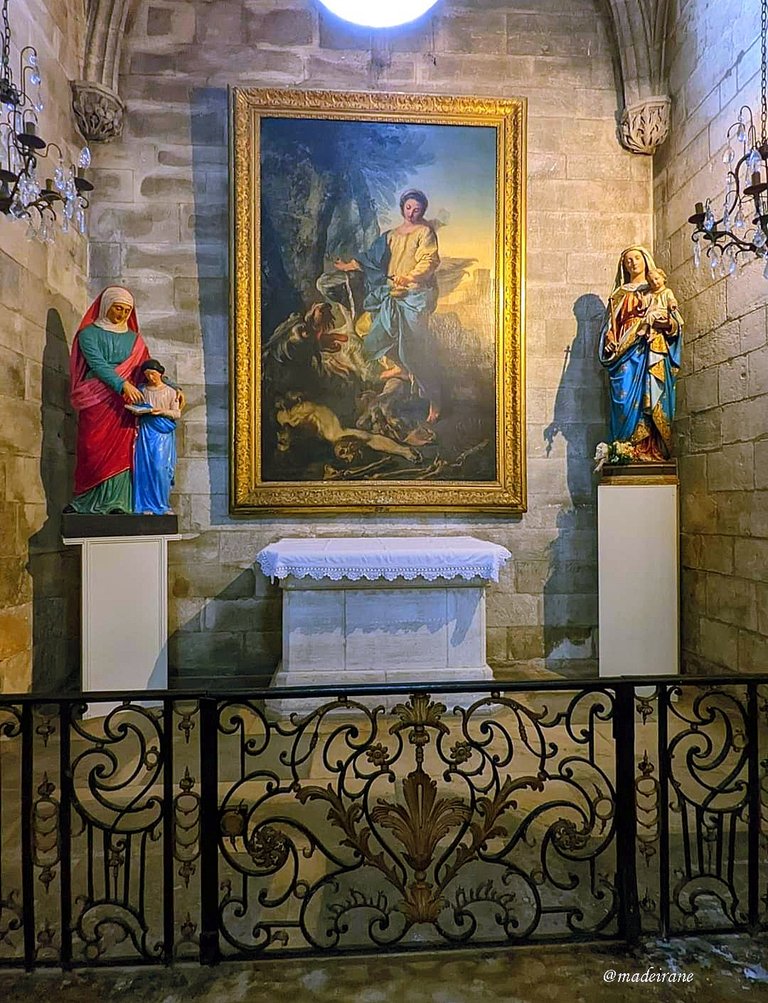
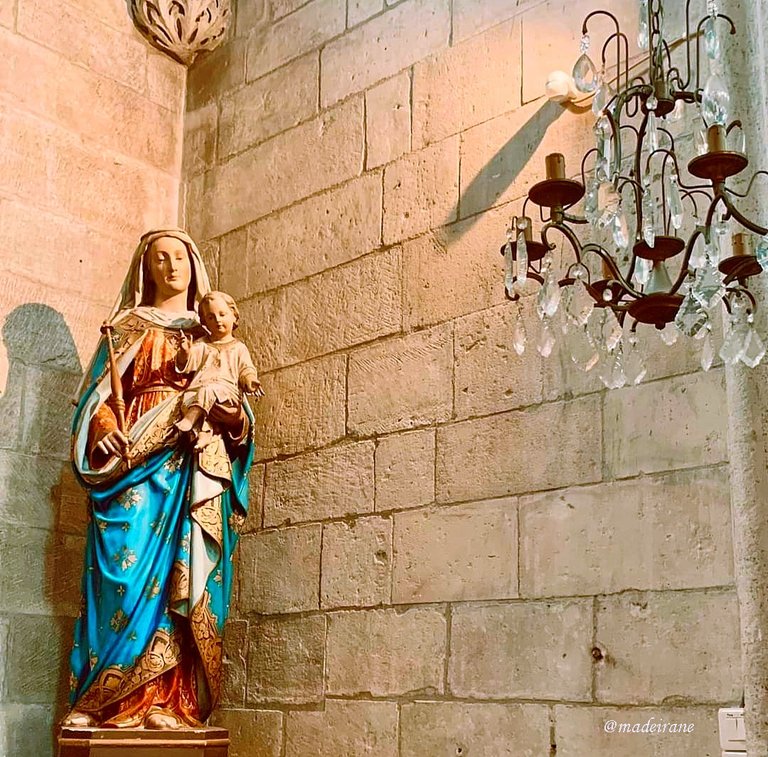
There is a sarcophagus with the remains of heroine in it.
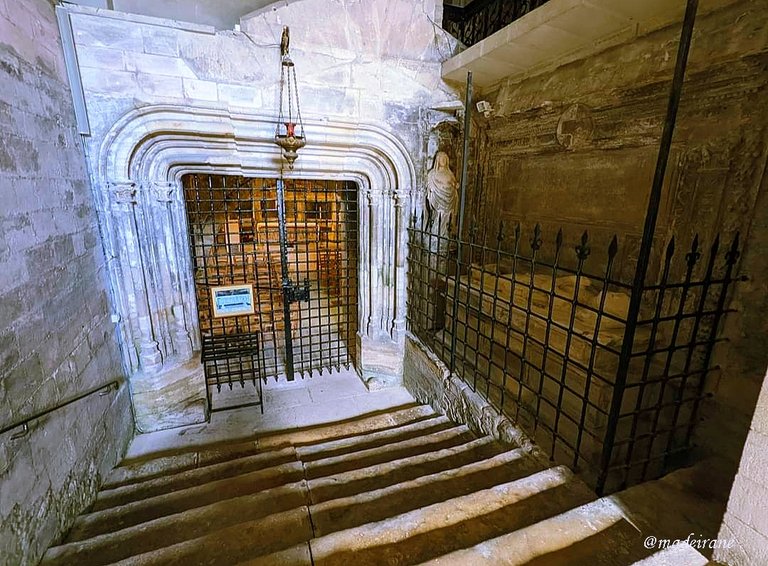
Tarascon Castle
We approached the gates of the castle at the moment when there was a little more than an hour left before its closing. Entering the ticket office (which, by coincidence, is a souvenir shop), I asked the employees if we would be able to "fit in" during this period of time, without creating problems for the staff and without risking being locked out. And the servants, smiling, answered that we could not worry and not rush.
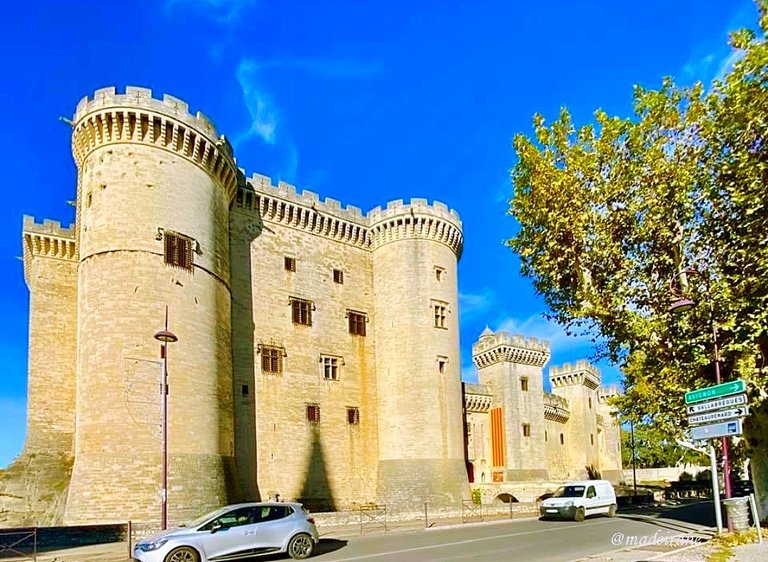

The price of the entrance ticket for adults is 7.5 EUR. In this same store, at the checkout, we bought a souvenir for 3 EUR - a keychain with a figure of Tarasque. True, Tarasque on a keychain looks worse than a monument: those who made it got some wild hybrid of a turtle with a cat.
The history of the castle is long and with a sad finale. The castle that we see today was built in the 15th century for the Duke of Anjou and Counts of Provence Louis II and his eldest son Louis III. Since these gentlemen had certain political ambitions related to the Mediterranean, these lands were not suitable for the construction of a fortress-residence. By the way, the location of Tarascon even before the reign of the Dukes was appreciated by both the Romans and the ancient Greeks.
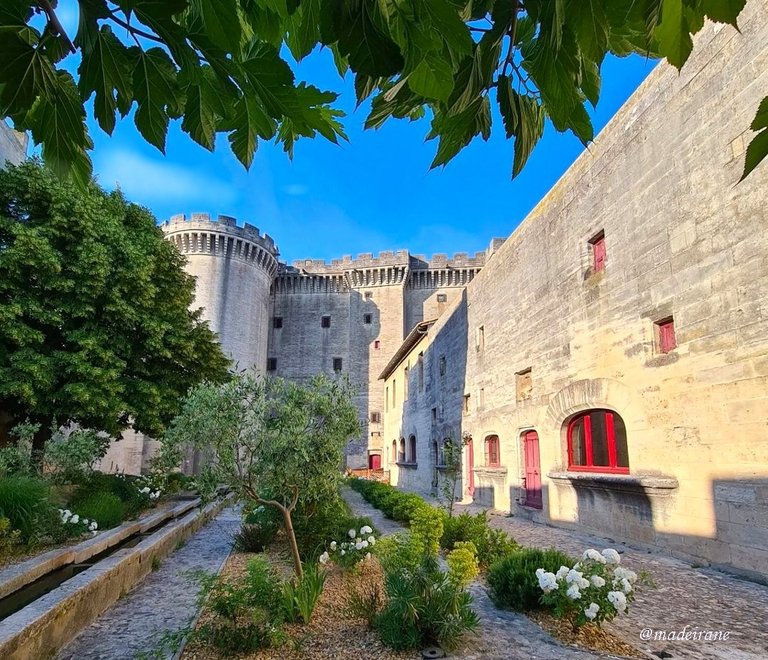
The construction of the castle was completed under the rule of the second son of Louis II - René, who became at that time the king of Provence and received the nickname "The Good". It should be said that Rene has a number of other high-sounding titles (the titular king of Naples, Jerusalem, etc.), however, in reality, most of them had a nominal character. And many of the lands "applied" to his titles "floated" to more volatile competitors.
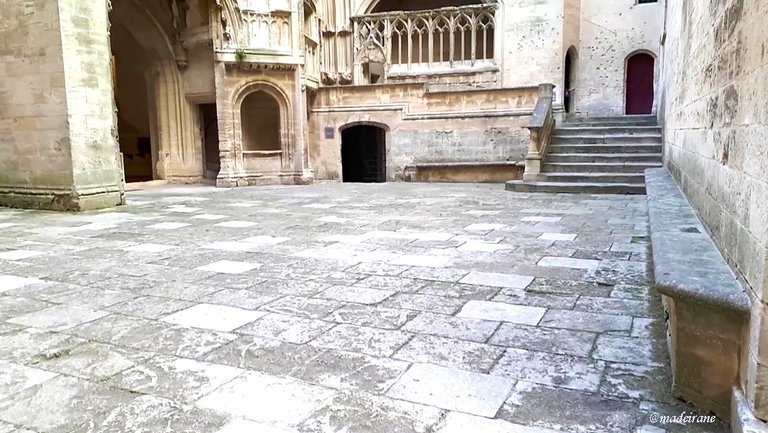
Despite failures in foreign policy, Rene was sincerely loved by the residents of Provence and, in particular, the citizens of Tarascon. King-troubadour, king-founder of the order of knights, organizer of knightly tournaments and author of the treatise on special events. King-patron, who surrounded himself with scientists, poets, artists and musicians. Rene wrote music, drew, wrote pastorals. I notice that it was under Rena that a holiday was invented in honor of the liberation of the city from Taraska, which has been celebrated until now.
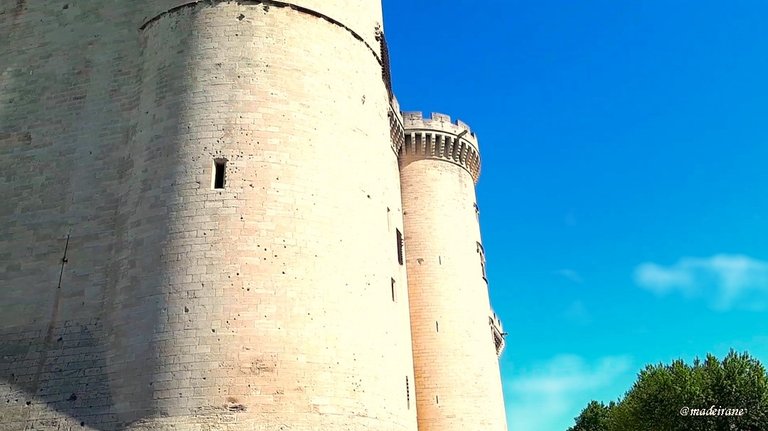
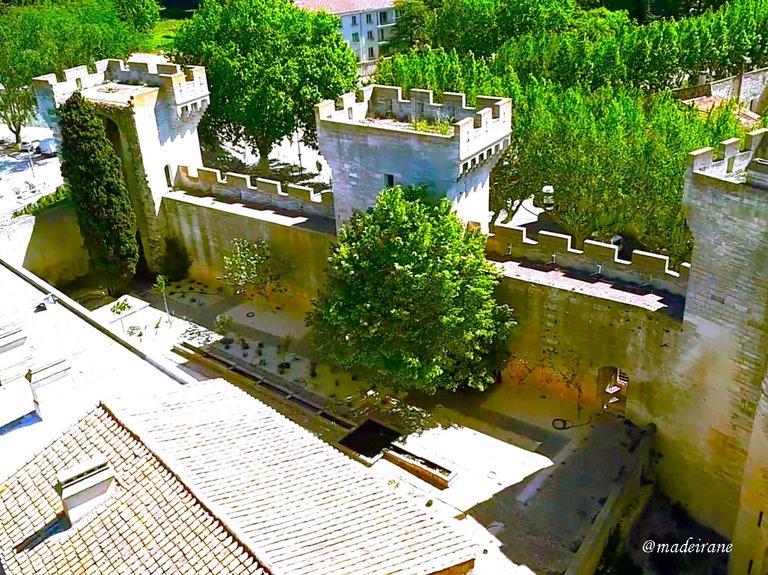
After René's court "relocated" to Tarascon, the castle was renovated and decorated in the best traditions of the Renaissance. After the death of René, Provence became the property of his nephew Charles of Maine, and since Rene's nephew was childless, Provence became part of France in the 1580s.
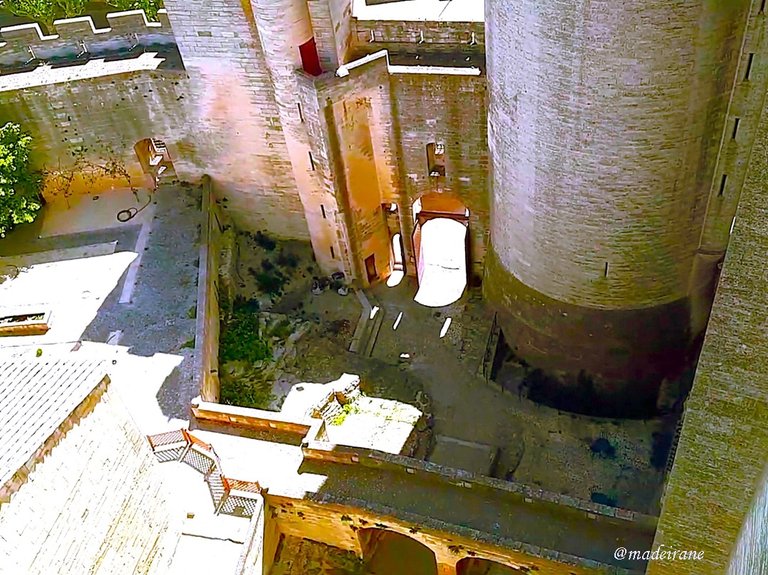
This is the end of all the positives in the history of the castle. No one lived there anymore, except for the rare overnighters of passing courtiers and government officials. A significant part of its premises was turned into common cameras of military prison. Later, the prison from military became civilian, and even children have been prisoned there.
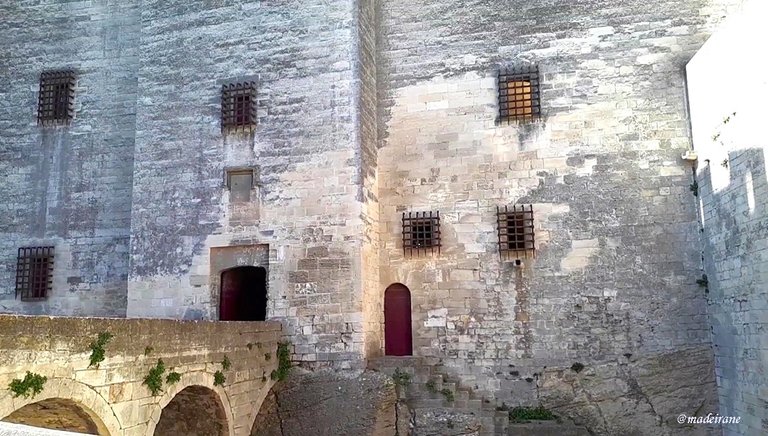
In our days, the Rene Castle, restored after the entire epic, is owned by the Municipality of Tarascona, t. е. French state.
In the courtyard of the castle, a long cross-shaped pond with miniature waterfalls is made.

The front yard is "hidden" behind the massive walls and towers with machine guns.
Fragments of busts of King René and his wife are visible in the niche, located slightly higher and to the right of the cloth with the royal coat of arms. It's sad that busts, like many in this castle, suffered from prison pages in the chronicle of his life.
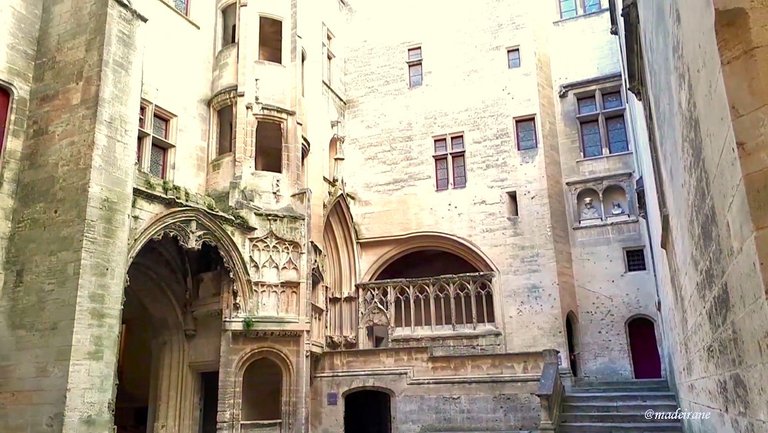

Take into account that in the castle you will have to walk on very steep and dark spiral stairs, which are not designed for the ascent or descent of a large number of people. Therefore, be careful and attentive.
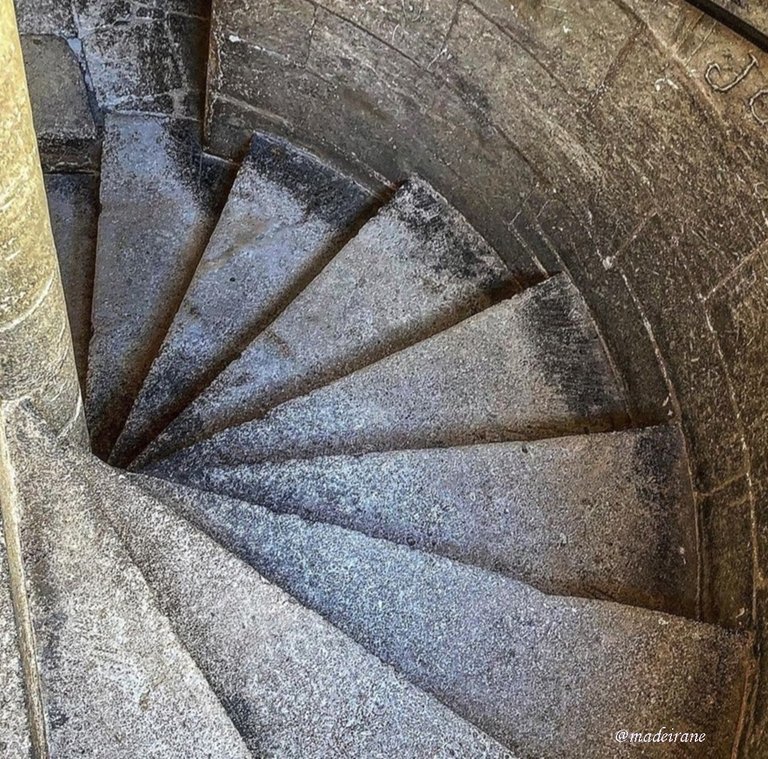
But the most important thing when visiting this (and, in principle, any) castle is not to make demands on it that are not adequate to its «biography», its purpose and the era in which it was built.
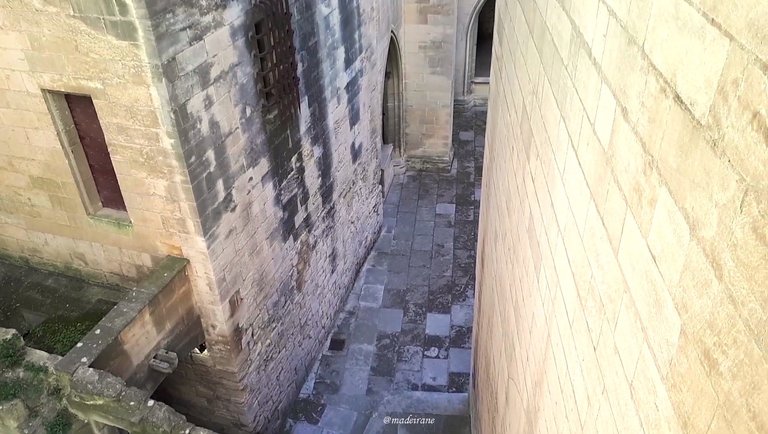
I remind you that the last ruler of Provence died in the 15th century. Add to this date approximately three hundred years of desolation, the prison's past, which lasted from the 18th century to 1926, and think about what objects from the "era of King René" can be seen in its halls? Correct: none. Wall inscriptions made by prisoners can be found elementary, but we hope for some artifacts from the Renaissance, sorry, it's naive.

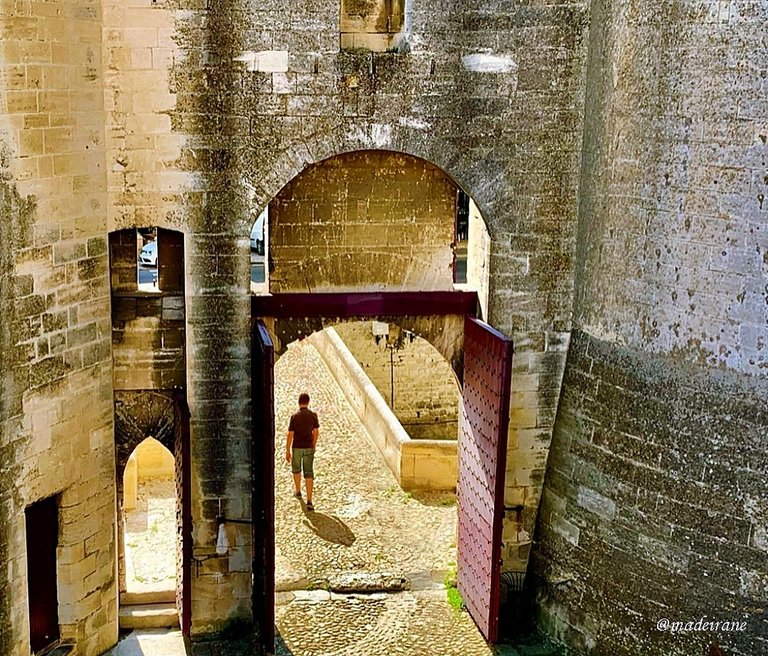
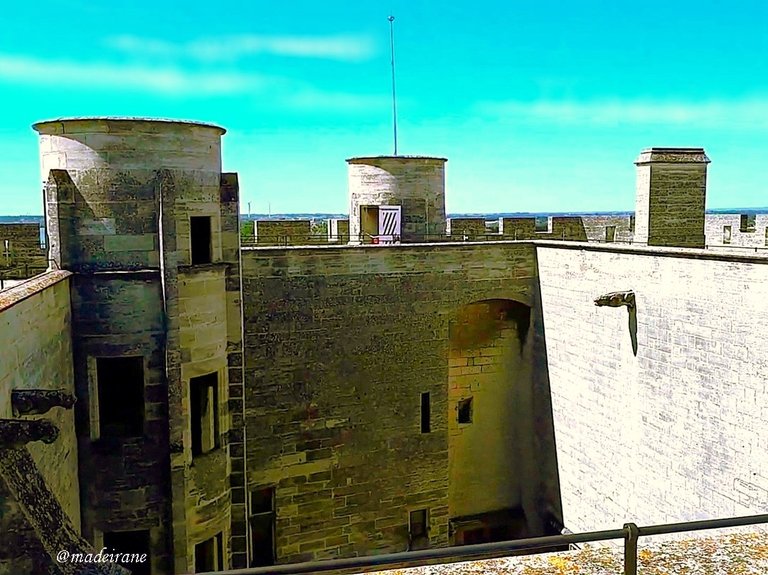
However, some will be disappointed, although the problem is not the castle, but a lack of common sense.
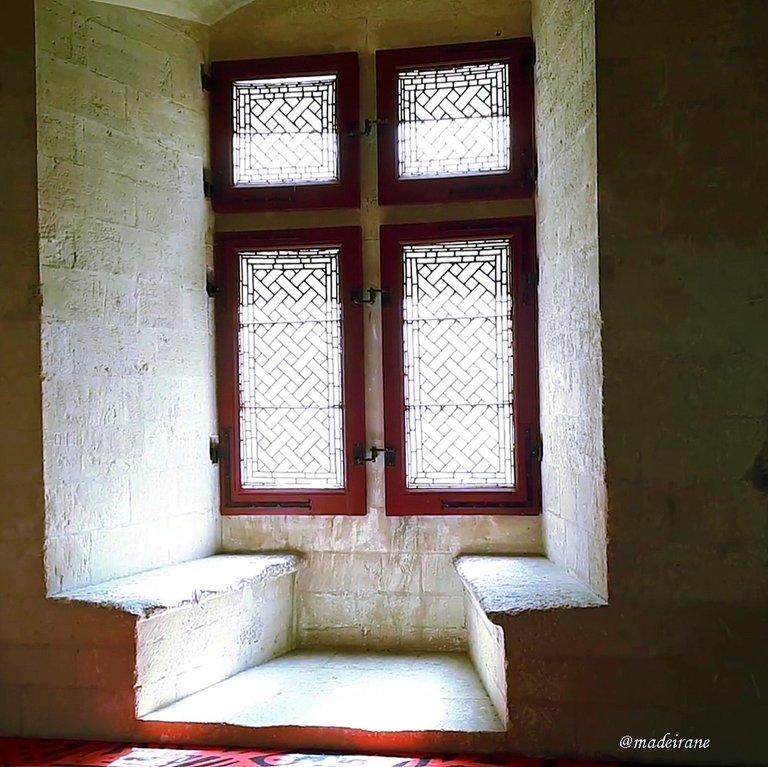
And even deserted halls are still impressive. Remnants of its former beauty and, in particular, the grace of openwork partitions and other surviving fragments of stone decor.

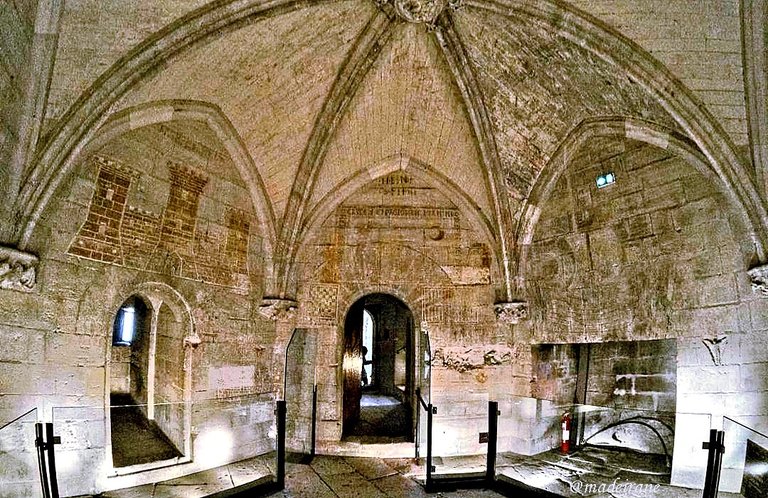
Views from the Tarascon castle
The most favorite place for tourists coming to the castle is its upper part. People flock to the terrace, which offers beautiful views.
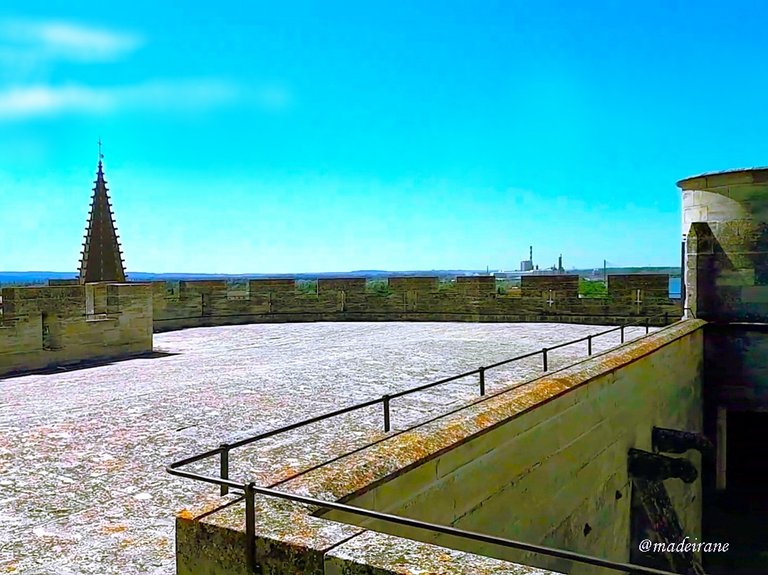
Tarascon, Rhone, Camargue, panorama of the Alps - everything is in full view. From the terrace you can see another castle - in Beaucaire. Beaucaire, I note, does not belong to Provence, but to the Languedoc-Roussillon region.
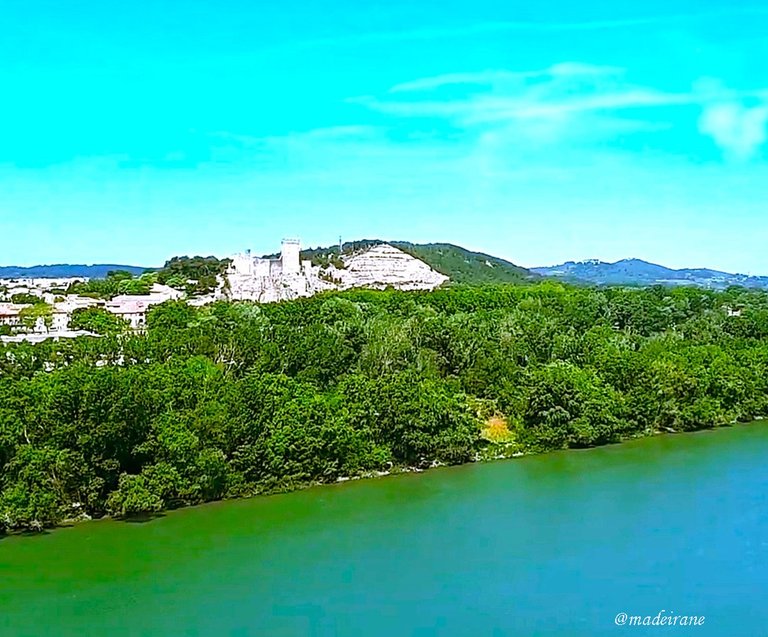
Together with us and other tourists, a gargoyle looks out over the surrounding area. How much it knows and remembers! But, alas, it won’t tell you anything.
The footage (there’s no getting around it!) also includes signs of our time: factories, electric wind turbines, “dormitory” areas.

Some of the best views from the terrace are, naturally, the views of the Church of Santa Marta and the reddish rivers of the Tarascon tiled roofs. In general, Tarascon, if we talk about development, is a typical Provençal city. Provence like clockwork.
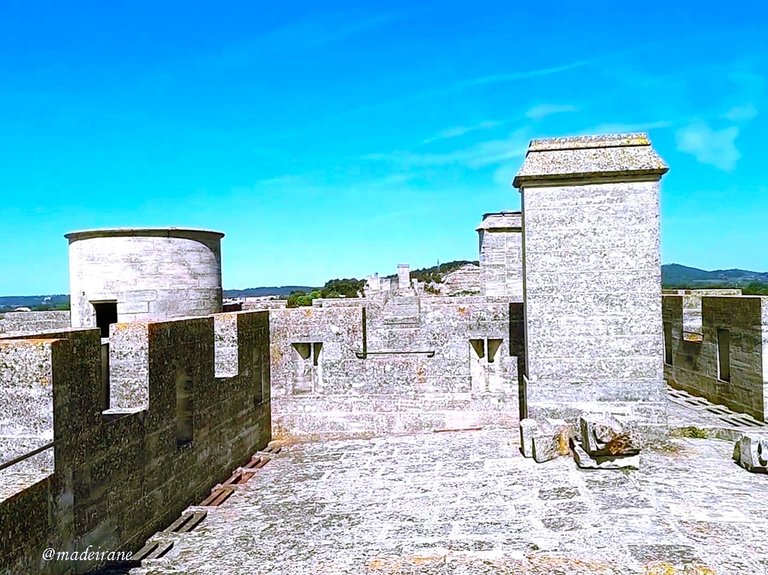
In the outbuilding of the castle there is a collection of ancient earthenware that belonged to the pharmacy at the St. Nicholas Hospital. The dishes were made in the 17th-18th centuries at the royal manufactory in Montpellier. On each container is written the name of the product that should be stored in it. As can be seen from the inscriptions, the origin of the “preparations” was plant-based: chicory, thistle, wormwood...
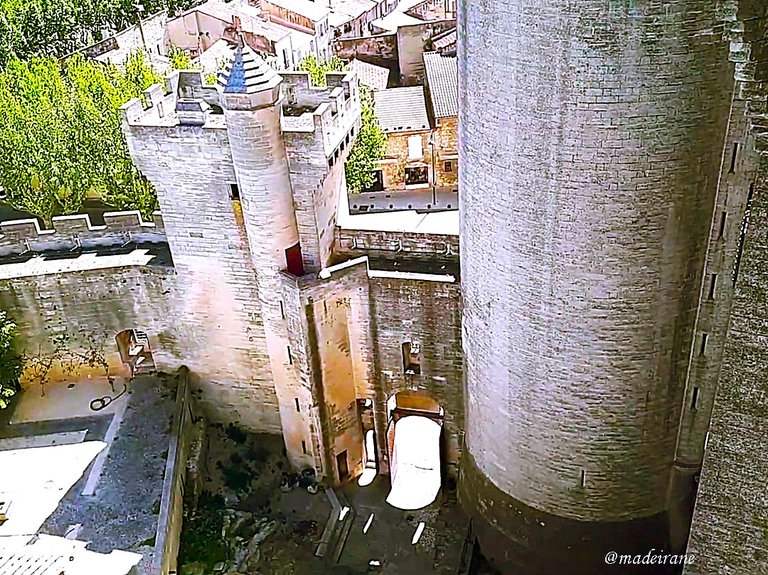
On the final note
In conclusion - again about literature. Of course, Alphonse Daudet produced a bright, wonderful version of the Provençal Baron Munchausen, Don Quixote and Sancho Panza “in one bottle.” Having made Tartarin a fellow countryman of the Tarasconians, Daudet forever glorified this city.

But for me, the figure of a real inhabitant of Tarascon is more interesting - the “non-standard” and essentially landless king of Provence, who left behind this huge white castle, ten thousand lines of pastoral, written by him for the woman he loved, and who did a lot of good for his kingdoms.
Further on, our path led to a new place to stay for a night.
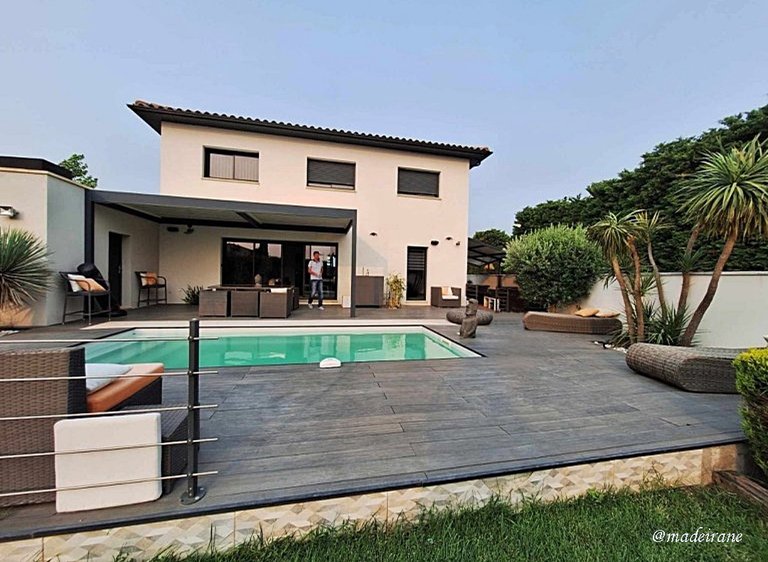
Translated from Lithuanian via DeepL (free version).
💝💝💝💝💝💝💝💝
With love, @madeirane
© 2023
"Prancūzijoje visi yra šiek tiek taraskoniečiai." Manau, kad daugelis mano kartos skaitytojų prisimena būtent šį epigrafą, kuriuo prancūzų rašytojas Alfonsas Daudė (Alphonse Daudet) pateikė savo pirmąjį trilogijos romaną apie išradėjo ir nenuilstančio pagyrūno Tartarino nuotykius.
Tačiau į šį malonų Provanso miestelį mane atvedė visai kitos, toli gražu ne literatūrinės priežastys.
Pirmoji priežastis buvo... legenda. Tiksliau, du su ja neatsiejamai susiję paminklai.
Kaip manote, kas tas gyvūnas su iltimis, nagais, kiautu, panašiu į vėžlio, ir akimis, panašiomis į Aukso ordos karių? Susipažinkite su Tarasku. Taip vadinosi į drakoną panaši būtybė, senovėje gyvenusi krūmynuose ant Ronos upės kranto, šio miesto teritorijoje.
Ši paslaptinga būtybė paliko pėdsaką miesto istorijoje dėl savo mitybos. Taraskas daugiausia valgė žmones (vienu metu vieną "maisto" porciją sudarydavo 8 žmonės), o mėgstamiausias jo maistas buvo mergelės. Akivaizdu, kad šie savotiški gastronominiai pomėgiai, kurių priežastis galima tik spėlioti, buvo didelė problema vietos gyventojams.
Šventoji Marta, atplaukusi į šiuos kraštus laivu, padėjo sutramdyti visus erzinusį gurmaną. Išgirdusi vietinių gyventojų skundus dėl įkyrios pabaisos elgesio, Marta sutiko ateiti jiems į pagalbą. Pagal vieną versiją ji tiesiog parodė gyvūnui medinį kryžių, o pagal kitą - dainavo jam dainą. Taraskas, paveiktas arba krikščioniškojo tikėjimo galios, arba aukšto meno, atsigulė prie Martos kojų kaip šuo ir užsnūdo. Marta, užrišusi šiam muzikos mylėtojui ant kaklo kaspiną, lyg ant pavadėlio nuvedė jį į miestą. Tačiau gyventojai, netikintys drakono esteto perauklėjimu, paėmė ir nužudė vargšą žmogų.
Antroji (ir, tiesą sakant, svarbesnė už pirmąją) mūsų apsilankymo Tarascon priežastis buvo noras pamatyti vietos pilį, kuri įėjo į istoriją kaip Provanso karaliaus Renė pilis. Pilis, kaip ir bažnyčia, yra netoli nuo Tarasko.
Į Tarascon mano vyras ir aš atvyko penktą valandą vakaro, iš Arlio miesto, po to, kai baigė didelę ekskursijų programą, kuri apima levandų laukai Senank abatijos, vaizdingas kaimas Le Beau-de-Provence, ir daug daugiau . Atstumas nuo Arlio iki Taraskonos yra apie 20 km, t. y. e. važiuoti, jei kelyje nėra force majeure aplinkybių, - 25-30 min.
Pasveikinę Taraską, norėjome apžiūrėti bažnyčios, pašventintos jo sutramdytojos - šventosios Mortos - garbei, interjerą.
Bažnyčia, kurios architektūroje vyrauja romaninis stilius, yra netoliese - tiksliai priešais Taraską. Ji pastatyta XI ir XVII a. Iš tiesų tai dar vienas su šia legenda susijęs paminklas. Taip atsitiko todėl, kad po istorijos su pergale prieš gurmaną-estetą šventoji Marta buvo paskelbta dangiškąja Tarascon globėja.
Bet kadangi šeštadienį buvome Tarascon, bažnyčioje sutuokėme porą. Todėl, deja, negalėsiu papasakoti, kaip atrodo šios šventovės vidaus puošyba. Žinau tik tiek, kad ten yra sarkofagas su herojų palaikais.
Viduramžių renesanso milžinas Tarascon mane sudomino net už akių, kai nebuvo užsiminta apie kelionę į Provansą. Todėl iš anksto žinojau apie visus kataklizmus, kurie, švelniai tariant, ne pačiu geriausiu būdu paveikė pilies interjerą. Tačiau negalėjau neatvykti ir atiduoti pagarbos šiai didybei, šiam nuostabiam grožio ir žiaurumo mišiniui, nepaisant didžiosios dalies pilies patalpų pribloškiančios tuštumos.
Viduramžių renesanso milžinas Tarascon mane sudomino net už akių, kai nebuvo užsiminta apie kelionę į Provansą. Todėl iš anksto žinojau apie visus kataklizmus, kurie, švelniai tariant, ne pačiu geriausiu būdu paveikė pilies interjerą. Tačiau negalėjau neatvykti ir atiduoti pagarbos šiai didybei, šiam nuostabiam grožio ir žiaurumo mišiniui, nepaisant didžiosios dalies pilies patalpų pribloškiančios tuštumos.
Prie pilies vartų priartėjome tuo metu, kai iki jos uždarymo buvo likusi kiek daugiau nei valanda. Įžengęs į bilietų kasą (kuri sutapimu yra suvenyrų parduotuvė), paklausiau darbuotojų, ar per šį laiką galėsime "tilpti", nesukeldami problemų darbuotojams ir nerizikuodami būti užrakinti. O tarnautojai šypsodamiesi atsakė, kad galime nesijaudinti ir neskubėti.
Įėjimo bilieto kaina suaugusiesiems - 7,5 euro. Toje pačioje parduotuvėje prie kasos už 3 EUR nusipirkome suvenyrą - raktų pakabuką su Taraskos figūrėle. Tiesa, Taraska ant raktų pakabuko atrodo prasčiau nei paminklas: tie, kas jį pagamino, gavo kažkokį laukinį vėžlio su kate hibridą:)))
Pilies istorija ilga ir su liūdnu finalu. Pilis, kurią matome šiandien, buvo pastatyta XV a. Anžu kunigaikščiui ir Provanso grafams Liudvikui II ir jo vyresniajam sūnui Liudvikui III. Kadangi šie ponai turėjo tam tikrų politinių ambicijų, susijusių su Viduržemio jūra, šios žemės nebuvo tinkamos tvirtovės-rezidencijos statybai. Beje, Tarascon vietovę dar prieš valdant kunigaikščiams vertino ir romėnai, ir senovės graikai.
Pilis baigta statyti valdant antrajam Liudviko II sūnui Renė, kuris tuo metu tapo Provanso karaliumi ir gavo "Gerojo" pravardę. Reikia pasakyti, kad Renė turėjo ir daugybę kitų aukštai skambančių titulų (titulinis Neapolio, Jeruzalės ir kt. karalius), tačiau iš tikrųjų dauguma jų buvo nominalaus pobūdžio. O daugelis žemių, "pritaikytų" jo titulams, "plaukė" pas lakesnius konkurentus.
Nepaisant nesėkmių užsienio politikoje, Renė buvo nuoširdžiai mylimas Provanso gyventojų ir ypač Tarascon gyventojų. Karalius-troubadūras, riterių ordino įkūrėjas, riterių turnyrų organizatorius ir traktato apie ypatingus renginius autorius. Karalius-patronas, apsupęs save mokslininkais, poetais, menininkais ir muzikantais. Renė kūrė muziką, piešė, rašė pastoralijas. Pastebiu, kad būtent valdant Renė buvo sugalvota šventė, skirta miesto išlaisvinimui nuo Taraskos, kuri švenčiama iki šiol.
Renė dvarui "persikėlus" į Tarascon, pilis buvo atnaujinta ir papuošta pagal geriausias renesanso tradicijas. Po Renė mirties Provansas atiteko jo sūnėnui Karoliui Mainui, o kadangi Renė sūnėnas buvo bevaikis, 1580 m. Provansas tapo Prancūzijos dalimi.
Taip baigėsi visi teigiami pilies istorijos bruožai. Joje daugiau niekas negyvens, išskyrus retas pravažiuojančių dvariškių ir valdžios pareigūnų nakvynes. Toliau pilies laukia nepavydėtinas karinio kalėjimo likimas. Nemaža dalis jos patalpų bus paversta bendromis kameromis. Vėliau kalėjimas iš karinio bus pertvarkytas į civilinį, jame bus laikomi net vaikai.
Mūsų dienomis po visos epopėjos restauruota Rene pilis priklauso Tarascon savivaldybei, t. e. Prancūzijos valstybei.
Pilies kieme įrengtas ilgas kryžiaus formos tvenkinys su miniatiūriniais kriokliais:
Tvenkinyje gyvena ryškiai raudonos žuvys:
Priekinis kiemas "paslėptas" už masyvių sienų ir bokštų su kulkosvaidžiais:
Karaliaus Renė ir jo žmonos biustų fragmentai matomi nišoje, esančioje šiek tiek aukščiau ir į dešinę nuo audeklo su karaliaus herbu. Liūdna, kad biustai, kaip ir daugelis šioje pilyje, nukentėjo nuo kalėjimo puslapių jo gyvenimo kronikoje.
Atkreipkite dėmesį, kad pilyje teks vaikščioti labai stačiais ir tamsiais sraigtiniais laiptais, kurie nepritaikyti dideliam žmonių skaičiui kilti ar leistis. Todėl būkite atsargūs ir atidūs.
Tačiau svarbiausia lankantis šioje (ir iš esmės bet kurioje) pilyje nekelti jai reikalavimų, neadekvačių jos "biografijai", paskirčiai ir epochai, kurioje ji buvo pastatyta.
Primenu, kad paskutinis Provanso valdovas mirė XV amžiuje. Prie šios datos pridėkite maždaug tris šimtus metų trukusį tuštėjimą, kalėjimo praeitį, trukusią nuo XVIII a. iki 1926 m., ir pagalvokite, kokius daiktus iš "karaliaus Renė epochos" galima pamatyti jos salėse? Teisingai: nė vieno. Kalinių padarytų užrašų ant sienų galima rasti elementarių, tačiau tikimės kokių nors Renesanso laikų artefaktų, gaila, tai naivu.
Tačiau kai kurie nusivils, nors problema yra ne pilis, o sveiko proto stoka.
Net ir apleistos salės vis dar daro įspūdį. Išlikę buvusio grožio likučiai, o ypač ažūrinių pertvarų ir kitų išlikusių akmeninio dekoro fragmentų grakštumas.
Mėgstamiausia į pilį atvykstančių turistų vieta - viršutinė jos dalis. Žmonės plūsta į terasą, iš kurios atsiveria nuostabūs vaizdai.
Tarascon, Rona, Kamargė, Alpių panorama - viskas atsiveria prieš akis. Iš terasos galima pamatyti ir kitą pilį - Beaucaire. Pažymiu, kad Beaucaire priklauso ne Provansui, o Langedoko-Rusijono regionui.
Čia yra ir mūsų laikų ženklų: gamyklos, elektrinės vėjo jėgainės, "bendrabučių" zonos.
Vieni geriausių vaizdų iš terasos, savaime suprantama, yra Santa Martos bažnyčios vaizdai ir rausvos Tarascon čerpinių stogų upės. Apskritai Tarascon, jei kalbėtume apie plėtrą, yra tipiškas Provanso miestas. Provansas kaip laikrodis.
Pilies oficinoje yra senovinių molinių indų kolekcija, priklausiusi Švento Mikalojaus ligoninės vaistinei. Indai buvo pagaminti XVII-XVIII a. Monpeljė karališkojoje manufaktūroje. Ant kiekvieno indo užrašytas produkto, kuris jame turėtų būti laikomas, pavadinimas. Kaip matyti iš užrašų, "preparatų" kilmė buvo augalinė: cikorijos, garšvos, pelynai...
Pabaigai - dar kartą apie literatūrą. Žinoma, Alphonse'as Daudet sukūrė ryškią, nuostabią Provanso barono Miunhauzeno, Don Kichoto ir Sančo Pansos "viename butelyje" versiją. Pavertęs Tartariną taraskoniečių tautiečiu, Daudė visiems laikams pašlovino šį miestą.
Tačiau man įdomesnė tikro Tarascon gyventojo figūra - "nestandartinio" ir iš esmės bežemio Provanso karaliaus, palikusio po savęs didžiulę baltą pilį, dešimt tūkstančių pastoralės eilučių (!!!), parašytų mylimai moteriai, ir daug gero nuveikusio savo karalystėms.
Toliau mūsų kelias vedė į naują vietą nakvynei.
💝💝💝💝💝💝💝💝💝💝
Su meile, @madeirane
Nuotraukos darytos mano.
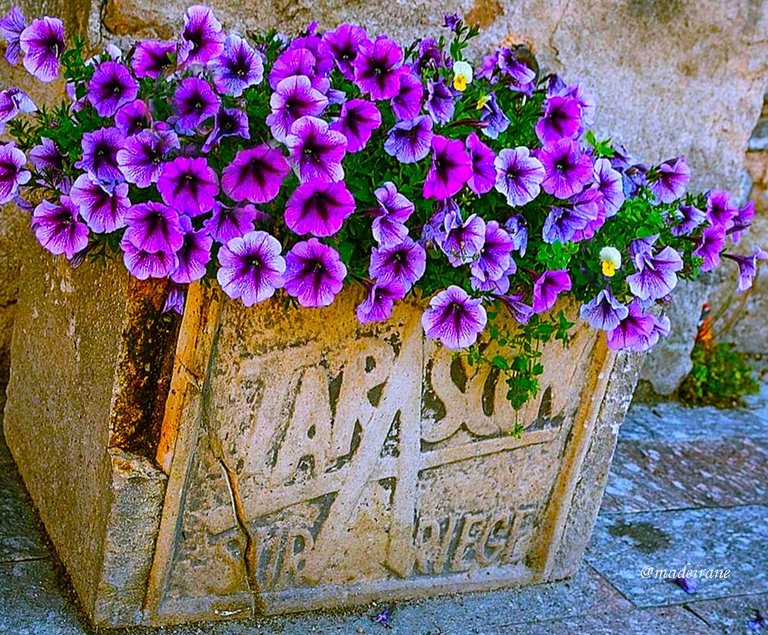
Congratulations, your post has been added to Pinmapple! 🎉🥳🍍
Did you know you have your own profile map?
And every post has their own map too!
Want to have your post on the map too?
Hello - the second photo seems to be taken from: https://miguelpeters.medium.com/fechando-a-trilogia-inicial-de-d-d-da-nossa-coluna-vamos-falar-sobre-uma-das-maiores-amea%C3%A7as-d74175fc8d4d - please in the future add a credit link to photos.
Congratulations @madeirane! Your post brought a smile to the TravelFeed team so we have sent you a smiley. Keep up the good job. 🙂
Thanks for using TravelFeed!
@for91days (TravelFeed team)
PS: TravelFeed is in social media to reach more people, follow us on Facebook, Instagram, and Twitter.